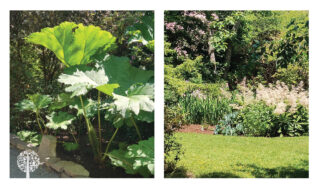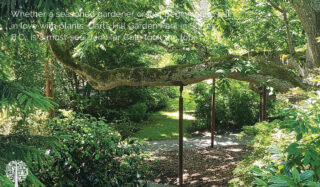“Darts Hill Garden Park is a paradise for nature lovers.”
Francisca Darts and her garden have been legendary among Metro Vancouver gardeners for decades. But when I visited the garden myself, I fully appreciated what the fuss was all about. Darts Hill Garden Park is the culmination of the hard work and vision of the late Edwin and Francisca Darts. In 1994, they donated their 7.5-acre garden to the City of Surrey, which now operates the property alongside the Darts Hill Garden Conservation Society.
What Grows In Darts Hill Garden Park?
When the Darts purchased the South Surrey property in 1943, they intended to grow fruit trees. The garden grew as they took courses, read books, joined clubs, and learned more about horticulture. Eventually, Darts Hill Garden Park became a plantsman garden of over 4,500 different plant species that is now open for the public to appreciate.

What To Expect At Darts Hill Garden Park
Against this backdrop, I came on a hot and sunny day to learn more about the history and the garden’s rich biodiversity. Leaving the sunbaked parking lot, I walked into the refreshing coolness of a woodland path. I’d come prepared with a map from the garden’s website and sheets of one of six recommended self-guided walks visitors can take through the garden. Of course, I chose the walk that focused on biodiversity in the garden.
Darts Hill Garden Park: A Personal Expression
Unlike a botanical garden, a plantsman garden reflects the personal taste and expertise of an individual or a group of garden enthusiasts. It showcases the gardener’s personal choices and collections of specialty flora and fauna, often closely planted in clusters to mimic nature. Signs throughout Darts Hill have QR codes that, once scanned, reveal short vignettes of Mrs. Darts explaining why she chose specific plants.
For example, she chose the different varieties of rhododendrons in the garden because she liked their leaves. Does this sound familiar? It sure did to my gardening heart and the best gardening advice I’d ever received: choose what makes you happy.
Biodiversity at Darts Hill Garden Park

Staying on the woodland trails, I appreciated the shade of the nine different species of pine trees towering overhead on a hot day. The pinecones are a food source for squirrels and bluejays. There are over 70 different varieties of magnolias in the garden. When blooming, the nectar-rich flowers are a magnet for beetles and flies.
Notable sightings along my walk included the giant rhubarb (Gunnera manicata). A non-native species, the cyanobacteria living in the plant’s leaf cells synthesize nitrogen, which helps it grow in poor swampy soils and gives it an ecological advantage over native flora growing in the same habitat. Transitioning out of the woodland, a vast lawn sprawled before me. Interspersed with perennial beds designed and planted by Mrs. Darts, June favorites such as peonies, oriental red poppies, white iris, and lupins were providing lunch for the dozens of bees and hummingbirds gathered around them.
Interconnections And Takeaways
Back under the shade of trees, the fallen logs and woody debris in the native plant garden offer homes for newts, salamanders, wasps, frogs, and even garter snakes. Coyotes hunt for mice and voles in the garden, and beetles, millipedes, and centipedes break down dead plants and transform them into fertile soil.
I was so impressed by the burgeoning Garry Oak ecosystem and the insects, birds, mammals, mosses, and fungi it supports. Once common throughout southern BC, development, agriculture, and encroachment of non-native invasive species have endangered Garry Oak ecosystems.
Only as my visit ended did Darts Hill’s magic reveal itself. Each section of the garden interconnects with another seamlessly. One plant’s services, such as food for pollinators, benefit another to create the whole. That didn’t just happen; it took vision, time, and thoughtful consideration from a gardener who understood that one plant does not help a garden grow. Instead, thousands work together to create true magic.
